The Bruce is a long narrative poem written in the 1370s by John Barbour, Archdeacon of Aberdeen. It offers an account of the life and adventures of Robert the Bruce and some of his closest followers, and it includes many references to monuments currently in the care of Historic Environment Scotland. This blog post will look at how these sites featured in King Robert’s life, according to Barbour’s poem.
Lochmaben Castle
Bruce’s bid to become King of Scots started rather dramatically. In February 1306, he killed his rival John Comyn, Lord of Badenoch, at Greyfriar’s Kirk in Dumfries. Barbour claims that Bruce fled from Dumfries to Lochmaben Castle, the caput (administrative centre) of his family’s lordship of Annandale.
At this time, Lochmaben (‘Louchmaben, Bk. 2, ll. 18) would have been an almost brand new, state-of-the-art fortress. It had recently been rebuilt in stone by King Edward I of England, replacing an older wooden castle nearby. However, Barbour tells us that Bruce did not stay long at Lochmaben. Having dispatched letters to his ‘freyndis’ asking them to provide him with military support, Bruce set off on a journey to Scone. There, on 25 March 1306 he would be inaugurated as King of Scots.
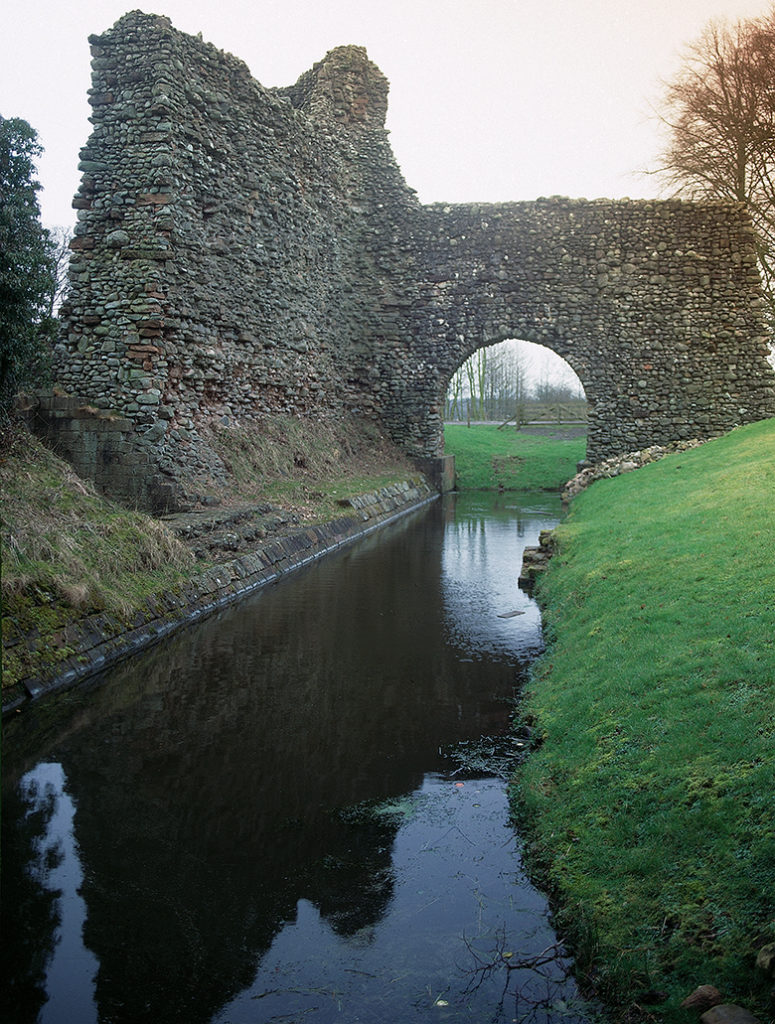
Lochmaben Castle was an important outpost in hostile territory for the English, and they made tremendous efforts to keep it in their possession throughout the 1300s.
Kildrummy Castle
Soon after his inauguration, King Robert suffered a devastating defeat at the Battle of Methven. Bruce led his men on a desperate retreat westward. As Bruce fled west, a number of his family and friends travelled north to Kildrummy Castle.
Kildrummy (‘Kildromy’, Bk. 3, ll. 337) technically belonged to Bruce’s nephew Donald, Earl of Mar, but since Donald was still a child at the time the castle was in Bruce’s keeping. This was where his younger brother Neil, his wife Elizabeth, his daughter from his first marriage Marjory, his sisters Christian and Mary, and his ally Isabella, Countess of Buchan sought shelter.
From Kildrummy, the royal women headed even further north, possibly hoping to flee to Norway. Neil Bruce remained behind to defend Kildrummy from the English. The castle was soon besieged by an army led by Edward, Prince of Wales, (the future Edward II). According to Barbour, the Scots had plenty of supplies and defended the walls so stoutly that the prince could not overwhelm them. However, a traitor named Osborn (‘Hosbarne’, Bk. 4, ll. 109) started a fire in the great hall that tore through the castle.
It was this act of sabotage that ultimately forced to garrison to surrender. Barbour reports that the captured Scots were ‘hangyt all and drawyn’ (Bk. 4, ll. 176). While this may not have been true for the entire garrison, hanging, drawing and quartering was certainly the grisly fate that awaited poor Neil Bruce.
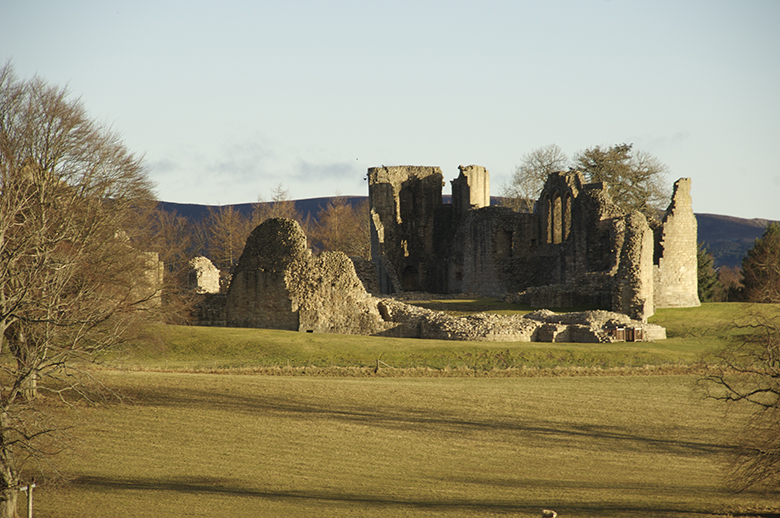
Kildrummy is known as ‘the noblest of northern castles’. In its medieval heyday, the huge castle dominated Strathdon as seat of the mighty earls of Mar.
Loch Doon Castle
Another of Bruce’s close relatives – his brother-in-law Sir Christopher Seton – was defending Loch Doon Castle around the same time. As with Kildrummy, Barbour attributes its capture of the island castle of Loch Doon (‘Lochdon’, Bk. 4, ll. 17) to betrayal among the defenders. This time the traitor is named Maknab, who Barbour condemns as ‘a discipill off Judas’ (Bk. 4, ll. 18). A later charter produced by King Robert confirms that Loch Doon had fallen due to treachery. However, this document identifies the traitor as Arthur, nephew of Sir Gilbert Carrick. Either way though, Seton was taken to England to be hanged, drawn and quartered, just like his brother-in-law Neil.
Loch Doon Castle can still be visited today, although it is no longer in the same place it was in 1306. In 1935 the entire structure was disassembled and re-built elsewhere to protect it from rising water levels in the loch!
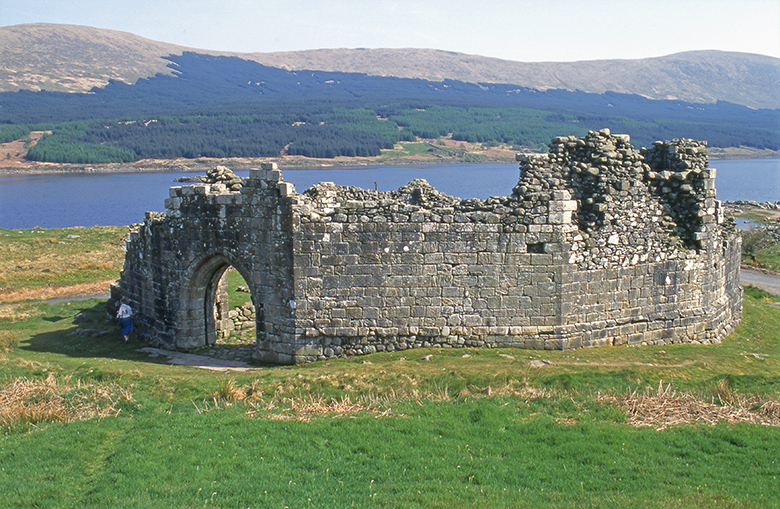
Loch Doon Castle was built by the Bruce earls of Carrick in the late 1200s.
Dunstaffnage Castle
In spring 1307, King Robert reappeared in south-west Scotland heading up the army he had spent the winter cobbling together. He launched a ruthlessly effective guerrilla campaign, which primarily targeted those Scots who still refused to recognise him as king.
In May 1308 he defeated the Comyns at Inverurie and then moved south-west to defeat John MacDougall in the Pass of Brander in Argyll.
In the wake of this battle, Bruce quickly laid siege to nearby Dunstaffnage Castle. He captured it ‘in schort tym’ (Bk. 10, ll. 116) as Barbour puts it.
Dunstaffnage (‘Dunstaffynch’, Bk. 10, ll. 113) was the centre of power of the MacDougall lordship of Argyll. After it fell, John and his father Alexander were forced to flee to England.
The defeat of the Comyns and the MacDougalls was a crucial moment in Bruce’s reign. It removed his main ‘native’ opponents and meant he could now concentrate on dismantling the English administration in Scotland.
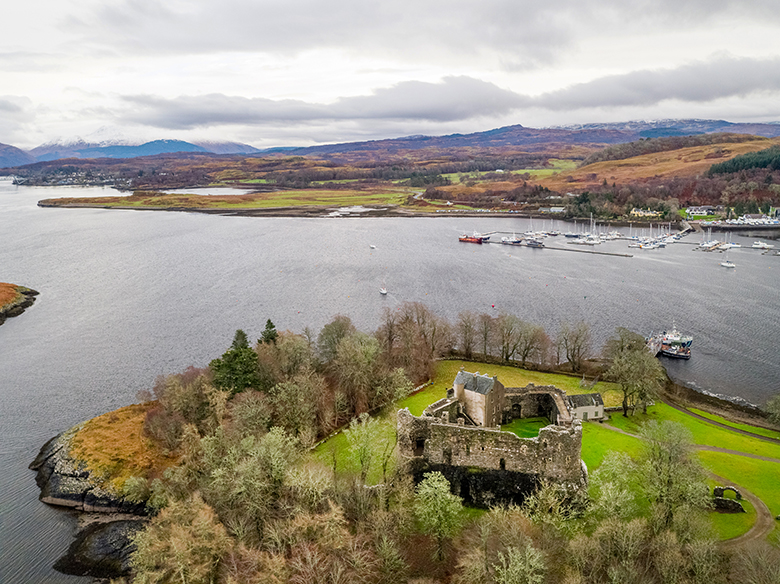
Dunstaffnage Castle is one of Scotland’s oldest stone castles.
Edinburgh Castle
By early 1314, Bruce had managed to recover most of Scotland. Only a few southern strongholds were still holding out against him.
In February, James Douglas – another of Barbour’s heroes – captured Roxburgh Castle. According to Barbour, Douglas managed to fool the garrison into thinking he and his men were stray cattle in order to approach the walls unchallenged !
Barbour claims that when Bruce’s nephew Thomas Randolph, Earl of Moray, heard of this outrageous achievement, he became determined to find a similarly audacious means of capturing Edinburgh (‘Edynburgh’, Bk. 10, ll. 514) for the king.
Luckily for Randolph, he was approached by one William Francis, whose father had once been the keeper of Edinburgh Castle. Francis had a sweetheart in the town and would regularly sneak in and out of the castle unseen in order to visit her. He offered to lead Randolph and his men up the north face of Castle Rock under cover of darkness. The attackers were able to gain entry and overwhelm the garrison before they could mount an effective defence.
Barbour includes the – somewhat unlikely – coda that in St Margaret’s Chapel one wall was painted with an image of a castle with a ladder against the wall and the words ‘Gardys vous de Francais’ (Bk. 10, ll. 752) written above it. This had apparently been interpreted as a warning that the castle would someday be captured by the French. However, Barbour implies that this was a prophecy of the person who would bring about its fall – William Francis!

Perched on a volcanic plug, Edinburgh Castle has dominated the skyline of Scotland’s capital city for centuries.
Stirling Castle
The Battle of Bannockburn was one of the seminal moments of Bruce’s reign. On 23 June, King Edward approached Stirling, with the intent of coming to the aid of the English garrison besieged in Stirling Castle (‘Strevillyne’, Bk. 11, ll. 6). The English King found Bruce waiting for him just south of the castle. Bruce’s men were protected by honeycombed pits that made it too difficult for the English to attack the Scots head-on. The English army tried to skirt around the Scottish army to the east, but on 24 June Bruce launched a counterattack. Edward’s army had moved into a narrow area between two streams where they could not exploit their greater numbers. The result was a scattered retreat of Edward’s army.
Barbour recounts how King Edward initially fled north towards the castle but was refused entry by the garrison. They intended to surrender now that the Scots had won the battle. Edward knew that if he was caught in the castle when it was surrendered, he would have become Bruce’s prisoner. This would almost certainly have meant an end to the war. Instead, Edward rode south to Dunbar – pursued all the way by a small band of Scots. There, he fled in a ship back to England.
Although the garrison had turned King Edward away, they did allow others fleeing the battle to take refuge in the castle. Barbour claimed that some actually climbed the rocky cliffs beneath the castle in their desperation to escape the battlefield.

This volcanic crag in Stirling has been fortified since ancient times.
Bothwell Castle
Another group of English soldiers beat a retreat to Bothwell Castle in Lanarkshire, led by Humphrey de Bohun, Earl of Hereford.
Bothwell (‘Bothwell’, Bk. 13, ll. 403) was being held for the English by Sir Walter Fitz Gilbert. It seems that when he heard news of how badly the battle had gone, he did some hasty calculations and decided his interests were better served by switching sides. Gilbert allowed Hereford and his men into the castle and then immediately took them prisoner! He handed the prisoners and the castle over to Edward Bruce a few days later.
This was another key moment in King Robert’s reign. Hereford – ‘the rich erle off Herford’ as Barbour calls him (Bk. 13, ll. 682) – was soon exchanged for the royal women – including Bruce’s wife Elizabeth – who had been prisoners in England since 1306. With Queen Elizabeth’s return, Bruce could now try to produce an heir to ensure his dynasty would survive beyond his own death.
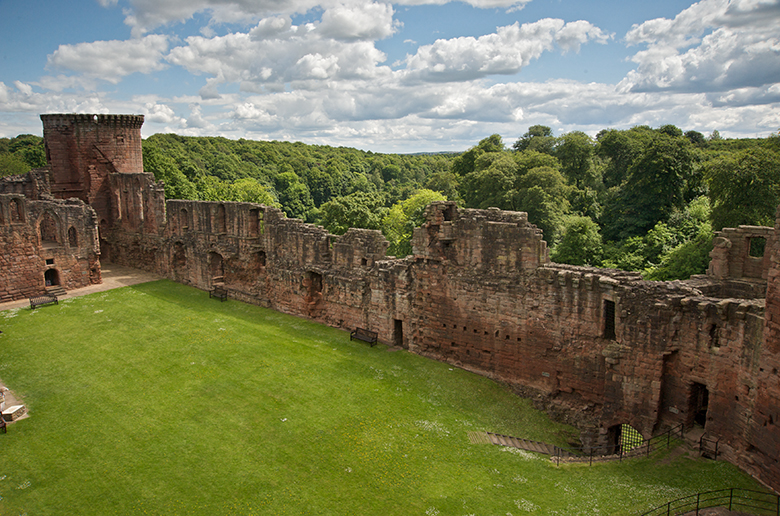
Bothwell Castle frequently passed back and forth between English and Scottish hands.
Let loose the Bruce!
Want to know more about Robert the Bruce? Check out more blogs about King Robert I and his friend, Sir James Douglas:

